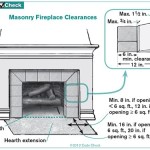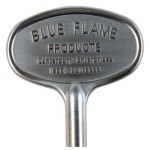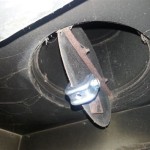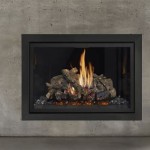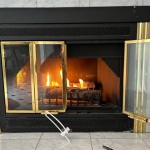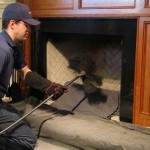Mounting a TV Above a Gas Fireplace: Considerations and Best Practices
Mounting a television above a gas fireplace has become a popular design choice, offering a centralized entertainment hub within a living space. However, this configuration presents several considerations that must be addressed to ensure the safety, longevity, and optimal performance of both the television and the fireplace. This article will explore the key factors involved in mounting a TV above a gas fireplace, including heat management, viewing angles, installation techniques, and potential risks.
Heat Management: The Primary Concern
The most significant challenge in mounting a TV above a gas fireplace is managing the heat generated by the fire. Excessive heat can damage the sensitive electronic components within the television, potentially leading to premature failure. The severity of the heat issue depends on several factors, including the type of fireplace, its BTU output, the distance between the fireplace and the television, and the presence of a mantel or other heat-deflecting features.
Gas fireplaces can produce both radiant heat, which travels in straight lines, and convective heat, which rises upwards. Radiant heat is more easily blocked or deflected by a physical barrier like a mantel. Convective heat, however, is more difficult to manage as it tends to accumulate near the ceiling. The higher the BTU output of the fireplace, the more heat it will generate, increasing the risk to the television. Therefore, evaluating the fireplace's specifications is crucial before proceeding with a TV installation.
Manufacturers of televisions typically specify an operating temperature range. Exceeding this range, even for short periods, can degrade the performance of the LCD panel, the backlight, and other internal components. Repeated exposure to high temperatures can lead to permanent damage, requiring costly repairs or replacement of the television. It is imperative to understand the temperature tolerance of the specific TV model and to ensure that the installation configuration will maintain temperatures within the safe operating range.
One effective strategy for mitigating heat is the installation of a mantel. A properly sized mantel can act as a barrier, deflecting radiant heat away from the television. The depth and material of the mantel are important considerations. A deeper mantel provides more effective heat deflection. Materials like stone, brick, or concrete absorb and dissipate heat more effectively than wood. The mantel's construction should also ensure it is securely attached to the wall and capable of supporting its weight.
Another option, particularly in newer homes, is a recessed or zero-clearance fireplace. These fireplaces are designed to minimize heat transfer to surrounding surfaces, often incorporating insulation and venting mechanisms. However, even with a zero-clearance fireplace, it's still crucial to assess the temperature above the firebox to ensure it remains within safe limits for the television.
To accurately assess the temperature above the fireplace, it is recommended to conduct a test burn. Operate the fireplace at its highest setting for an extended period (e.g., 1-2 hours) and use a thermometer to measure the temperature at the proposed location of the television. Pay close attention to the temperature during the entire burn period, as it may fluctuate. If the temperature exceeds the TV manufacturer's recommended operating range, alternative mounting locations or heat mitigation strategies should be considered.
Consider using a temperature sensor with a remote display placed near your seating area. This allows you to continuously monitor the temperature above the fireplace while it is in operation and intervene if necessary to protect the television.
Viewing Angle and Ergonomics
Even if the heat issue is adequately addressed, the viewing angle of the television when mounted above a fireplace can present another significant challenge. Mounting a TV too high can lead to neck strain and discomfort, especially during extended viewing sessions. The optimal viewing angle is generally considered to be at eye level when seated in the primary viewing position.
The height of the fireplace and the distance from the seating area to the television will determine the viewing angle. In many cases, mounting a TV directly above a fireplace will result in a viewing angle that is significantly higher than ideal. This can lead to a strained neck and eye fatigue over time. Careful consideration must be given to the dimensions of the room and the height of the fireplace to determine the feasibility of mounting a TV in this location.
One potential solution is to use a tilting TV mount. A tilting mount allows you to angle the TV downwards, improving the viewing angle and reducing neck strain. However, the effectiveness of a tilting mount depends on the specific angle adjustment range and the distance from the seating area to the television. It is important to choose a tilting mount that is compatible with the size and weight of the TV and that provides sufficient tilt to achieve a comfortable viewing angle.
Another approach is to consider alternative mounting locations for the television. If possible, mounting the TV on a wall adjacent to the fireplace may offer a more comfortable viewing experience. Alternatively, a custom-built cabinet or shelving unit can be designed to house the television at a more appropriate height. These solutions may require more extensive renovation, but they can provide a more ergonomic and aesthetically pleasing outcome.
Before committing to a specific mounting location, it is helpful to simulate the viewing experience. Use a large piece of cardboard to represent the size of the television and temporarily mount it at the proposed location. Then, sit in the primary viewing position and assess the viewing angle. Adjust the cardboard until you find a comfortable viewing height and angle. This will help you visualize the final result and make informed decisions about the mounting location and the type of mount to use.
The size of the TV also impacts the viewing experience. A larger TV requires a greater viewing distance to avoid eye strain. If the seating area is relatively close to the fireplace, a smaller TV may be more appropriate. Conversely, if the seating area is further away, a larger TV may be necessary to ensure optimal visibility.
Installation Considerations and Safety
The physical installation of a TV above a gas fireplace requires careful planning and execution to ensure safety and stability. The wall structure behind the fireplace must be strong enough to support the weight of the television and the mount. It is essential to locate the wall studs and use appropriate mounting hardware to securely attach the mount to the studs. Avoid mounting the TV solely to drywall, as it is not strong enough to support the weight.
Before drilling any holes in the wall, it is crucial to identify the location of any electrical wiring, gas lines, and other utilities. Drilling into a gas line or electrical wire can be extremely dangerous. If you are unsure about the location of these utilities, consult with a qualified professional before proceeding with the installation.
Cable management is another important consideration. Plan how you will route the power cord and other cables from the TV to the electrical outlet and other devices. Use cable ties or other management solutions to keep the cables organized and prevent them from dangling or becoming tangled. Concealing the cables within the wall can create a cleaner and more professional look, but it requires careful planning and execution to avoid damaging any existing wiring or plumbing.
When routing cables behind the wall, use plenum-rated cables. Plenum-rated cables are designed to be fire-resistant and produce less smoke in the event of a fire. This is especially important in areas where cables pass through enclosed spaces.
Consider the accessibility of the TV for future maintenance or repairs. Choose a mount that allows you to easily access the back of the TV for cleaning, cable adjustments, or servicing. A full-motion mount that extends and swivels can provide convenient access to the TV from various angles.
After the installation is complete, thoroughly test the TV to ensure it is functioning properly. Check the picture quality, sound, and all other features. Also, double-check that all cables are securely connected and that there are no loose connections.
It is always advisable to consult with a qualified professional for assistance with the installation. A professional installer can ensure that the TV is mounted safely and securely and that all necessary precautions are taken to protect the TV and the surrounding environment. They can also provide valuable advice on heat management, viewing angles, and cable management.
Gas Fireplaces may also be equipped with blowers to circulate heat. These blowers may increase the temperature around the electrical components of the TV if they are improperly installed or utilized. Be sure you understand the operating parameters of your fireplace's blower system.
Finally, consider the long-term implications of mounting a TV above a gas fireplace. While it can be an aesthetically pleasing and space-saving solution, it is important to weigh the potential risks and challenges carefully before making a decision. By taking the necessary precautions and seeking professional advice, you can minimize the risks and enjoy a safe and enjoyable viewing experience.

Can I Mount My Tv Above The Fireplace
Can I Mount A Tv Over My Fireplace Heatilator

Can I Mount My Tv Above The Fireplace

Mounting Your Tv Above Fireplace

Ortal S Innovative Technology Makes It Safe To Mount A Tv Above Your Fireplace

Can I Mount A Tv Over My Fireplace Warming Trends
How Far Should A Tv Be Above Gas Fireplace Quora

Is It Safe To Mount Your Tv Above The Fireplace Chimney And Wildlife

ᑕ❶ᑐ What To Consider Before Mounting A Tv Above Fireplace

Pros And Cons Of Mounting Your Tv Over Fireplace Vancouver Gas Fireplaces
Related Posts

